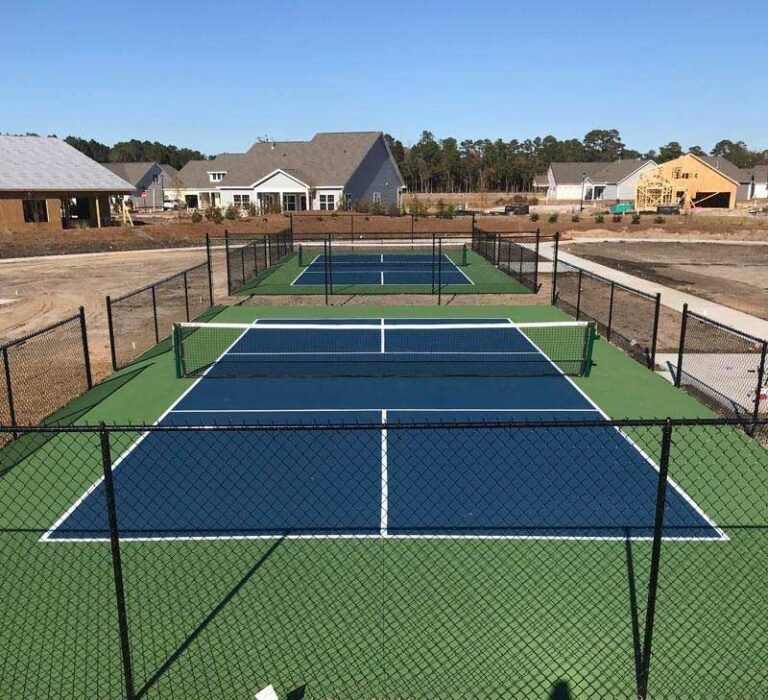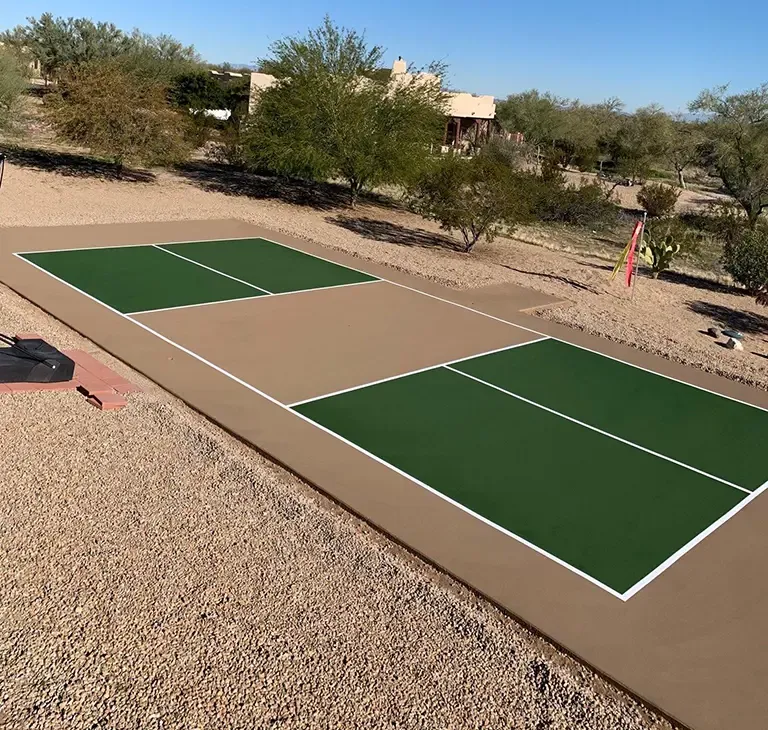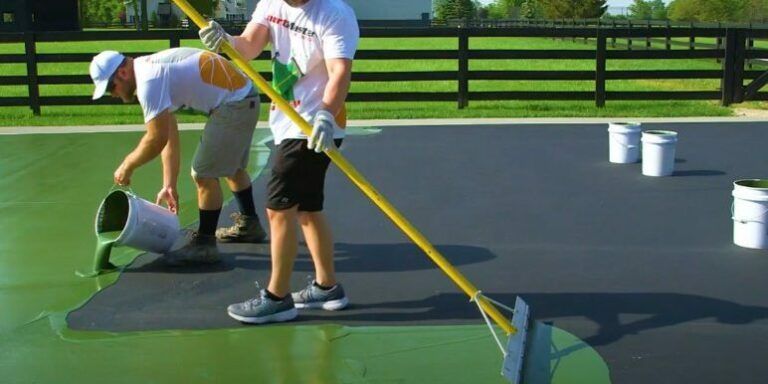Understanding the basics: Pickleball court cost factors & dimensions
When embarking on the journey to construct a pickleball court, understanding the basics is paramount. Regulation-size courts typically measure about 20 feet by 44 feet for doubles play. However, considering the total cost involves more than just dimensions; it encapsulates a variety of cost factors such as materials, labor, site preparation, and additional amenities. With many courts averaging between $10,000 and $30,000, it's essential to dissect each component's impact not only on the budget but also on the overall experience.

The core of any construction project lies in the site assessment. Factors such as the soil condition, drainage issues, and access to utilities can substantially impact costs. A rugged, uneven lot might necessitate extensive grading and preparation, leading to higher expenses. Moreover, you should consider local regulations and potential permit fees, which can add anywhere from $200 to $1,000 to your overall expense. Thus, being well-informed at the outset can lead to smoother planning and execution.
Site assessment and preparation
When you envision your pickleball court nestled within a sprawling green field or urban setting, it's easy to forget the underlying challenges that come with site preparation. The initial phase begins with a thorough site assessment. You’ll want to evaluate elements like soil conditions and existing vegetation; certain terrains might require extensive clearing and grading, which can significantly hike your expenditures.

Important considerations for site preparation include:
- Soil Quality: Poor soil conditions may require backfilling or reinforcing, escalating costs.
- Drainage: Proper drainage systems are essential to ensure longevity and playability of the court.
- Clearing Vegetation: Trees and bushes will require removal, often necessitating professional services.
In essence, a well-planned site assessment acts like the foundation of a house the stronger it is, the sturdier and more enjoyable the court will be for years to come.
Choosing the right pickleball court surface
The surface you choose for your pickleball court can drastically influence both cost and playability. Just like the foundation of a building, the right surface provides stability and performance. Asphalt, concrete, clay, and modular tiles each come with their own set of pros and cons. While each option offers various characteristics, consider how they impact not only your initial investment but the longevity and maintenance requirements of your court.

The most common choices are asphalt and concrete, and while they may seem similar on the surface, their cost driver distinction is significant. Asphalt might appear to be the more affordable option, costing between $4,000 to $6,000, while an entry-level concrete surface can climb from $6,000 to $10,000. The choice you make could affect ongoing maintenance costs, which often far exceed the initial investment over time.
Concrete pickleball courts
Concrete courts are celebrated for their durability and low maintenance needs. They fare better against wear and tear, making them an excellent choice for those looking for long-term solutions. The initial costs may range higher, but durability often translates to fewer repairs over time, providing a more cost-effective solution in the long run.
Asphalt pickleball courts
On the other side of the spectrum, asphalt courts are typically more affordable and quicker to install. Their initial setup can cost around $4,000 to $6,000. However, keep in mind that they may require more frequent repairs and resurfacing something that could affect your budget down the road. If you’re more budget-conscious upfront and looking for a quicker build, asphalt may be the way to go, but anticipate higher maintenance costs next.
Clay pickleball courts
Though less popular, clay courts offer a traditional playing experience like tennis courts. The cost and maintenance can be quite variable, often exceeding that of asphalt or even some concrete options. They require regular upkeep, including watering and adding new material, which can add to the overall lifetime expense.
Modular tile pickleball court systems
Modular tile systems provide a flexible and portable solution. These tiles can be installed quickly and can be particularly useful in areas where a permanent structure isn't feasible. They typically fall within the same cost range as more traditional surfaces, but the setup might be easier and faster, allowing players to enjoy the game sooner.
Surface finishing: Enhancing playability and aesthetics
Once you've selected the materials for your pickleball court, it's essential to consider how surface finishing can further impact your investment. Incorporating acrylic topcoats can enhance the aesthetics while improving playability through added resilience. This option allows for color customization, elevating the appearance of your facility and creating an inviting atmosphere for users.
It's safe to anticipate that an acrylic finish can add an additional $1,500 to $3,000 depending on the square footage and complexity of the design. This surface finishing can help extend the court's lifecycle significantly while amplifying the visual appeal a vital aspect when attracting both recreational players and competitive enthusiasts.
Essential equipment: Pickleball nets and posts
Beyond the surface lies the crucial element of performance: the pickleball net. Irrespective of how beautiful your court looks or how expertly it has been prepared, without the right equipment, the game simply can’t thrive. Nets and posts come in at varying price points.
The costs can be broken down into categories:
- Permanent net systems: These can range from $200 to $500 depending on the construction and materials.
- Portable net systems: For recreational use or quick setups, these nets can cost anywhere from $50 to $150.
Investing in a high-quality net ensures that your court accommodates both play and training, allowing users to maximize their pickleball experience.
Enhancing your court: Fencing, lighting, and accessories
To create an all-encompassing pickleball experience, consider investing in additional features like fencing and lighting. Fencing not only defines the court's boundaries but also adds that needed layer of safety and security. The costs for fencing can vary widely, ranging from $15 to $25 per linear foot depending on the materials.
For example, a standard chain-link fence might cost less than a vinyl option, but aesthetics and durability should weigh into your decision.
Fencing options and costs
| Type of Fence | Cost per Linear Foot |
|---|---|
| Chain Link | $15 - $20 |
| Vinyl | $25 - $30 |
| Wood | $20 - $35 |
Simultaneously, installing lighting can elevate usability, allowing for evening plays and tournaments. Lighting systems can set you back between $50 to $100 per fixture, adding up if multiple fixtures are needed. It is essential to integrate these features into your budget upfront, as they can truly transform the playing experience and extend hours of enjoyment.
Cost-saving strategies for building a pickleball court on a budget
If you find yourself operating under a tight budget, there are numerous strategies to mitigate costs without compromising the quality of your pickleball court. One effective approach is to explore the DIY construction route. With a little skill and manpower, you can significantly lower your expenses.
DIY pickleball court construction
A modest DIY court might range from $600 to $1,200 if you make use of existing surfaces and incorporate basic materials. If you feel confident about your construction skills, providing your own labor and planning the layout can be rewarding both financially and personally.
Converting existing courts for pickleball
Another strategy involves converting existing courts, like a tennis or basketball court, into a pickleball venue. While the resurfacing costs vary, this can often be a cost-effective solution that saves both time and money.
Maintaining your pickleball court: Protecting your investment
Once your pickleball court is up and running, the journey doesn’t stop; maintaining it is vital. Like any other investment, routine cleaning, repairs, and overall upkeep will determine its lifespan. Neglecting maintenance can lead to costly repairs down the road, overshadowing any initial savings.
Regular maintenance tasks include:
- Cleaning the court surface to avoid debris buildup.
- Inspecting and repairing cracks or damage, especially in asphalt courts.
- Resurfacing as needed to maintain playability and aesthetics.
Understanding the pickleball court maintenance requirements will better prepare you for the life cycle costs surrounding your court.
Financing your pickleball court: Exploring funding options
If initial costs seem daunting, consider various financing avenues tailored to community construction. These options include public funding, grants, loans, and even crowdfunding. Engaging with your community can foster a sense of shared ownership, making it easier to gather financial support.
Practical financing strategies
- Public funding: Local governments often allocate budget for community improvement projects, including recreational facilities.
- Private funding: Seeking sponsorships or partnerships with local businesses can alleviate financial burdens.
- Crowdfunding: Engaging the community through platforms dedicated to fundraising can also yield funds for construction.
Pickleball court kits: A convenient and affordable solution
For those who prefer a streamlined approach, pickleball court kits present a compelling option. These pre-fabricated courts typically include all necessary components, which allows for quick installation without losing quality. The average pricing can range from $8,000 to $15,000, offering a more manageable alternative for individuals or organizations looking to establish a court without extensive planning.
Building a pickleball community: Shared ownership and social events
As you embark on building a pickleball court, consider the community surrounding it. Shared ownership can foster strong social interactions, leading to events, tournaments, and gatherings that can enhance community spirit. Encouraging participation through fundraisers or social events can harness local support.
In summary, constructing a pickleball court may initially seem daunting due to its multitude of associated costs. However, understanding the various factors involved from surface types to additional features can help clarify your budget and investment. With careful planning, you can establish a lasting facility that brings joy and activity to your community, enriching the vibrant world of pickleball for years to come.










